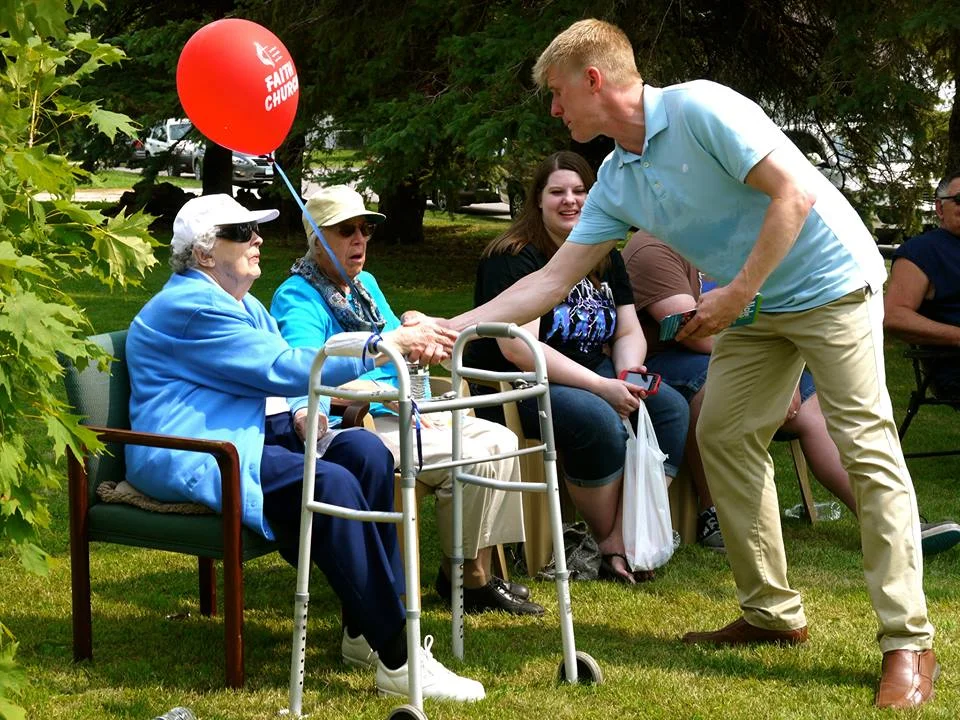Task force develops emergency plan for Olmsted County's homeless population
(THE MED CITY BEAT) - Remember how cold last winter was?
Now, close your eyes and try to imagine yourself homeless. It's -40 degrees and you have nowhere to go. Businesses are closed, the shelters are full and the police aren't even willing to arrest you.
Where do you go? That's the question some people in our community were forced to answer during one of the coldest winters ever recorded.
"A group of us were very concerned about that," said Shery Block, the program supervisor of housing, outreach and recovery at Zumbro Valley Health Center. "With Rochester being the community that it is, we just felt like we could do better."
Several local organizations are now teaming up to make sure no one will ever again be left outside on the coldest of nights. This winter, the Salvation Army Community Center (see map) will open as an emergency warming shelter any night a wind chill advisory is issued by the National Weather Service.
The organizations finalized the new plan at a housing consortium meeting last week. The task force, which is made up of local homeless shelter operators and social workers, meets once a month to discuss ways to help single adults experiencing homelessness.
The Salvation Army building will be open and staffed at 8 p.m. anytime wind chill temperatures are expected to be -25 degrees or less for at least 3 hours. About 15 beds can be set up in the building, though no one will be turned away if the number people seeking emergency shelter exceeds that number.
Wind chill advisories were issued 25 times last year, compared to four in an average year. The National Weather Service says exposure to the combination of strong winds and low temperatures without protective clothing can lead to frostbite, hypothermia and/or death.
The underground world of homelessness
Local advocates told The Med City Beat that the number of people experiencing homelessness in southeast Minnesota is higher than most people think.
"It's a bit more hidden here," said Warren Duncan, the regional manager for Hearth Connection, a Twin Cities-based nonprofit that serves as an intermediary between funding sources and local community providers like Zumbro.
"When you think of homelessness, you think of that traditional guy in the big metro area that's underneath an emergency shelter," Duncan said. "Here, it could look differently. It can be people doubled up in housing; people bouncing from place to place; people living in substandard housing like barns."
A count back in January of 2012 found there were at least 379 individuals experiencing homelessness in southeast Minnesota. A significant portion of that population was in Olmsted County.
"It's bad here, I can tell you that right now," said Jim, a middle-aged man who had been living on the streets for seven years until recently seeking help from Zumbro. "I know girls that are out there right now, eight months pregnant, and they're sleeping under bridges."
Breaking the cycle
There is no single reason someone is homeless, advocates say. It could be mental health issues, drug addiction or lack of a support structure. But regardless of the individual case, the best way to help someone trapped in a cycle of homelessness is to provide him or her with stable housing.
"It changes a person's outlook and allows them to look forward," said Sean Rice, the head of marketing, development and customer service at Zumbro. "Once the housing is in place, they can get treatment for their chemical dependency or whatever else needs to be addressed."
But homeless advocates say making the transition from sleeping on streets to in between sheets can often be as difficult as the other way around. The individual will require a strong support system to ensure they have access to the resources needed to improve their quality of life.
"Some are in the program for two years, and they get out and move onto self dependence," said Block. "Others are in the program for eight years, and they're doing good, but the reason they're doing good is because they're getting the housing and support they need."
(Cover photo: scribbletaylor / Creative Commons)








